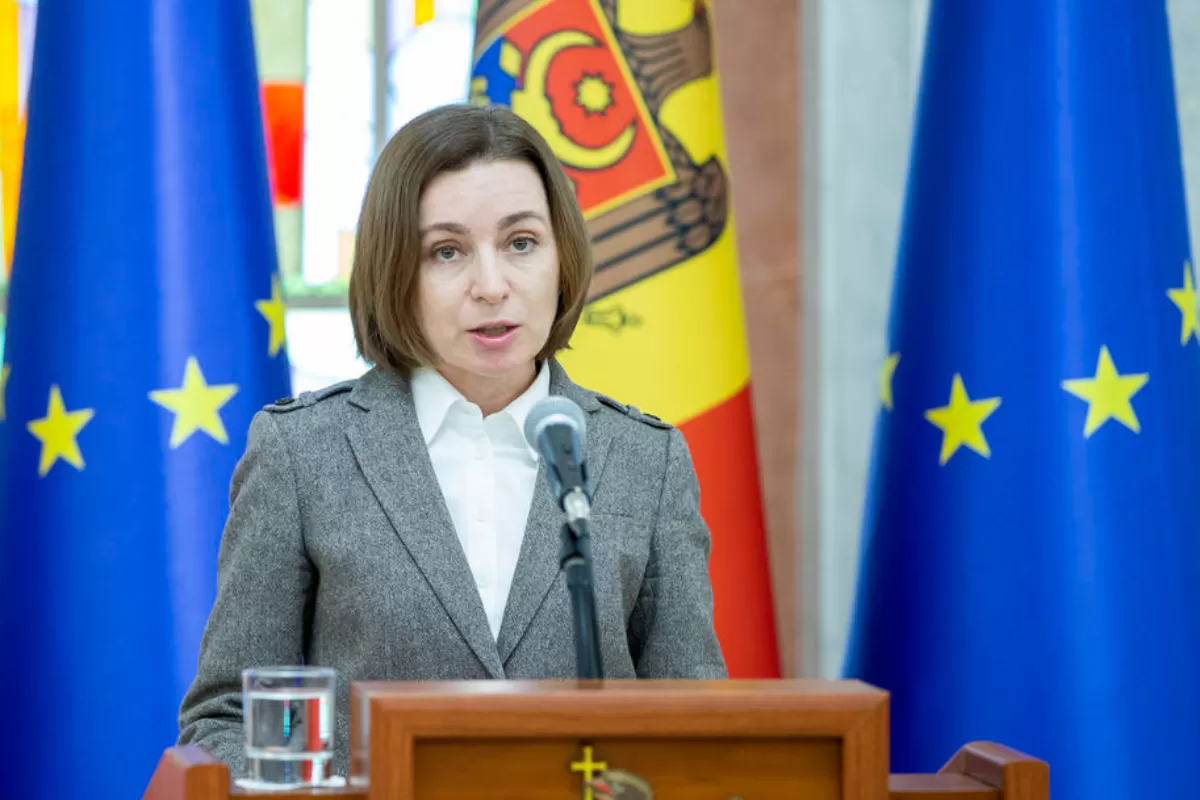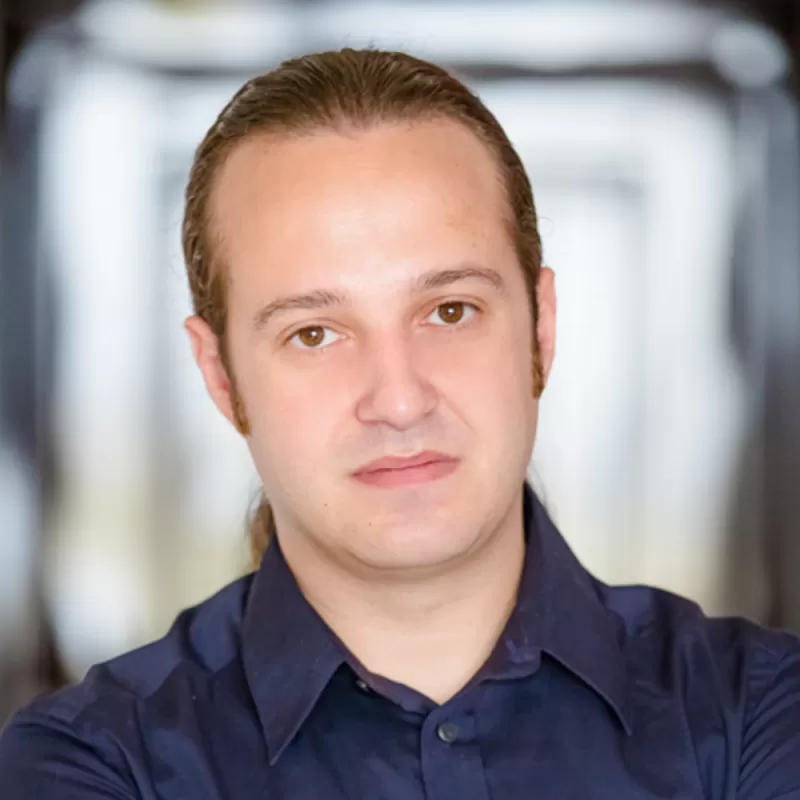
As May 9 draws closer, the day when Russia and other ex-Soviet countries celebrate the victory against Nazi Germany, the number of incidents impacting Moldova’s weak spots increases. In Găgăuzia or Bălți, there are voices calling for breaching the law banning the symbols associated with the Russian invasion of Ukraine. Several unclaimed “attacks” have taken place in Transnistria.
Three unidentified men attacked the empty headquarters of the Transnistrian Ministry of State security armed with grenade launchers. Several emitters in Mayak village in Transnistria, which were rebroadcasting Russian channels, but which had been out of commission for a long time, were blown up. Moreover, a series of similar incidents occurred at the airport in Tiraspol, which independent sources could not verify. Last but not least, gunfire was reported close to the old warehouse storing Soviet-era ammunition in Cobasna.
There are three possible explanations regarding the attacks. According to the official version of Chișinău authorities, the attacks could be the result of political infighting in Transnistria. The second scenario is that Ukraine is behind the attacks, in an interest to expand the war and find new allies. Finally, considering Russia’s previous false-flag operations – including in Donbas, shortly before the large-scale invasion – the attacks were ascribed to Moscow and its forces, and were interpreted as a sign that Russia is preparing to attack Odessa, including from the direction of Transnistria, or that it actually plans on invading Moldova as a whole.
Găgăuzia: pro-Russian politicians insist on wearing the ribbon of Saint George, a symbol of the Russian army
After the episode in Transnistria, pro-Russian politicians have stepped up, this time in the Autonomous Region of Găgăuzia in southern Moldova, where local deputies are seeking to provoke Chișinău. They lifted the ban on using the symbols associated with the Russian army and the war, introduced by Chișinău on April 20. Several local politicians, divided in a number of groups, all affiliated to Russia, are struggling to take power and want to stage a parade displaying the ribbon of Saint George on May 9, a holiday in Russia and other ex-Soviet republics that commemorates the victory over Nazi Germany. The symbol in question is used by Russia as part of its invasion of Ukraine, and was therefore forbidden in the Republic of Moldova.
The Minister of Justice, Sergiu Litvinenco, has already announced that the decision taken by Comrat authorities will be subject to a legal inquiry via the territorial office of the State Chancellery, and the contested law will most likely be rescinded, in line with national legislation.
The initiators of this move include the ATUG People’s Assembly deputy Serghei Cimpoeș, a local businessman who was investigated in 2015 as part of two economic fraud cases, Nicolae Dudoglo, a runaway ex-member of the party founded by Vlad Plahotniuc, himself a fugitive from justice, as well as Victor Petrov, another local businessman who had dealings with Gazprom. Petrov is a known associate of former pro-Russian president Igor Dodon.
The latter is a vehement advocate of Russian propaganda, and in the last round of presidential elections sided with Dodon and expressed readiness to act against “the West that seeks to destabilize Moldova.”
The tone was set by the de facto leader of the Party of Socialists, Igor Dodon, who shortly after Maia Sandu ratified the law, called on people to rebel and attend the May 9 parade wearing the ribbon of Saint George, traditionally displayed by everyone wishing to celebrate Victory Day.
Dodon is now playing the “Russian card” with caution in a veiled attempt to reassert his loyalty towards Moscow and thus regain its favor, after being sidelined for his failure to win the latest round of presidential election against Maia Sandu.
On the other hand, much like Dodon, who would send regular updates to Moscow during his term as president of the Republic of Moldova, the Autonomous Territorial Unit of Găgăuzia (ATUG) and its leaders have for many years reported to the “Moldovan subdivision” of the Kremlin, which is a de facto unit of Russia’s foreign intelligence service, the SVR, managed by Russian colonel Igor Maslov, according to the “#Kremlinovici” series of investigations carried out by RISE Moldova.
For many years, ATUG leaders have been taking orders directly from Moscow regarding the actions they need to take, the messages they need to deliver and the tone, of course, which should be obviously anti-Western and pro-Russian. The “Chernov Archive” of the “Moldovan subdivision” contains all the data revealed by the media shortly before the 2020 presidential election in the Republic of Moldova.
Bălți: bishop Marchel, the spearhead of Russia’s interests
After Transnistria and ATUG, another pole of instability that Russia can use as a bridgehead in the Republic of Moldova is the city of Bălți, the second-largest in Moldova, inhabited by a large number of Russian ethnics with pro-Kremlin ideas.
The tip of the spear are not the politicians themselves, but rather the clergymen, who are canonically subordinated to the Patriarchy of Moscow. More specifically, bishop Marchel, a clergyman who constantly gets involved in politics, endorsing pro-Russian forces and over the years promoting conspiracy theories and narratives that are also commonplace in Russian propaganda.
Last week, bishop Marchel displayed the bicolor ribbon of Saint George on his lavish limousine. Marchel told reporters he opposes the war in Ukraine, but refused to explain why he chose to display a symbol that was declared illegal in the Republic of Moldova on his private car.
Also in Bălți, as well as in other large cities in the Republic of Moldova, the Congress of Russian Communities led by Valery Klimenko distributed bicolor ribbons of Saint George to the people.
“The purpose of this action is to congratulate Moldovan citizens on the eve of Victory Day and to present them with the symbol of this day, the ribbon of Saint George. In those towns and villages where we have distributed the ribbon we have noticed a small number of people refusing the gift”, the Congress of Russian Communities reported.
For many years, Klimenko served as president of the pro-Russian party Ravnopravie, which in 2016 was taken over by Ilan Shor, the fugitive oligarch involved in the billion-dollar theft.
In mid-March, Valery Klimenko made a number of controversial statements about the war in Ukraine. “Ukraine has become a country of warring factions, and now this special operation was organized in order to root out this disease. No one will ever allow for Russians to be killed anywhere in the world, and Vladimir Putin has upheld this law”, Klimenko said.
Russia has no significant forces in Transnistria, but it has drawn to this region Ukrainian troops involved in the defenses of Odessa
Even though the Republic of Moldova has a poorly equipped and small army, the region of Transnistria doesn’t fare any better. Instead, it fuels a myth of superiority of its troops compared to Moldovan forces, one worthy of the “Potemkin villages” designed to save appearances ever since the days of the Russian Empire. The myth was subsequently disseminated by present-day Russia, which doesn’t look like the world’s second military power judging by the war in Ukraine.
The reality on the ground is different, and the Ukrainian magazine Militarnyi discussed the state of the Transnistrian paramilitary forces and the Russian troops deployed in the region. The publication published a thorough x-ray of the military forces on the left side of the Dniester, their numbers and military technology.
Militarnyi identified troops subordinated to three power structures – the ministries of the Defense, the Interior and the Special Services – the MGB. There are several brigades, acting alongside several lines of strategic action, equipped with 30 or 40-year-old military equipment inherited from the USSR’s 14th Army.
Their level of training is extremely low. Transnistrian soldiers are largely executing maneuvers instead of target practice. In turn, Transnistrian helicopters never perform shooting drills, the Ukrainian magazine also writes.
Moreover, Oleksiy Arestovich, security adviser to president Zelensky and an ex-officer of military intelligence, last week said Ukraine is ready to solve the Transnistrian issue “in the blink of an eye”, although for that it requires Chișinău’s approval. Still, should Ukraine notice any strategic actions from Tiraspol, it reserves the right to intervene in the separatist enclave with a view to defending its territory, with or without Moldova’s approval.
“It is obvious the region of Transnistria is now being used by the Russians to sow panic. This breeds instability and danger”, the director of the Ukrainian Institute for International Policy, Nadija Afanasieva, has told Veridica.
She also explained that the frontline has now moved to eastern Ukraine, but that Russia wants to conquer as much of Odessa as possible. The oblast is well fortified, which means the Russians will have to attack from multiple directions.
“Right now, the Ukrainian army is well in control of Odessa. The security service and the Ukrainian General Staff are well aware the threat is real. I am confident they also have responses in places”, the Ukrainian expert said.
In turn, military analyst Claudiu Degeratu told Veridica.ro that Transnistria will become an area of great instability.
“This is also owed to the fact that the frontline in Ukraine is getting ever closer to the Odessa oblast. This leads me to believe the recent explosions in Transnistria were caused by the Russians. They were orchestrated by the Russian army and probably seek to achieve two things. On the one hand, it’s an offensive on Odessa oblast. The Ukrainian army will somehow have to divide its forces. Part of them will be involved in the defenses of northern Odessa, while the other part will focus on the developments in Transnistria”, Degeratu explained.


